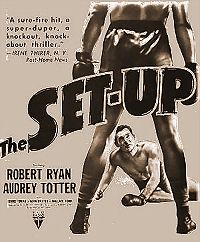Students of English often complain about the difficulty of learning phrasal verbs. Simply put, a phrasal verb is a combination of a verb (an action word like look, take, set) and a preposition (a short connecting word like up, out, over) in which the preposition gives the verb a new meaning. In this sense, we can say that the meaning is idiomatic – in other words the phrase can’t be translated word by word but only by looking at the phrase as a whole.
Sometimes verb + preposition combinations are not idiomatic, as in the phrase listen to. To is simply the preposition that’s required after the  verb listen if you want to say what it is you’re listening to, as in: She’s listening to the radio.
verb listen if you want to say what it is you’re listening to, as in: She’s listening to the radio.
Sometimes a single phrasal verb can have both a literal, non-idiomatic meaning and one or more idiomatic or figurative meanings. For example, if you want to see the moon you have to look up at the sky. The word up here is used as a kind of adverb (adverb particle is the  tehnical term) and it doesn’t really change the meaning of the verb look — it just tells us the direction you’re looking.
tehnical term) and it doesn’t really change the meaning of the verb look — it just tells us the direction you’re looking.
However, when you don’t know the meaning of a word and you look up the word in a dictionary, there’s nothing directional about the word up. Look in this phrase still means use your eyes, but the meaning of the phrase as a whole has a very specific focus – searching for information in a reference book or online.
There are some grammatical issues with phrasal verbs – can another word come between the verb and preposition or not? – but learning how to use phrasal verbs is best accomplished the same way that you go about learning any new vocabulary.
How to Learn Phrasal Verbs:
1. Read and listen. When you see or hear a phrasal verb you don’t know, write it down. But don’t just write down the verb and the preposition, copy the whole sentence. Understanding the context – how the phrase is used with the other words in the sentence – is what will make it possible for you to use the phrase yourself in the future.
2. Find out the meaning in that specific context. This is where a teacher or native English speaker can save you time, because there is often more than one meaning for each phrasal verb, but if you’re on your own, look it up in a dictionary and decide which definition fits best in context.
3. Practice it in conversation and/or writing. Get feedback from a teacher or native English speaker about whether or not you’re using it the way native speakers do.
4. Study your list of phrasal verbs and keep adding to the list. If you find a phrasal verb from your list used in a new way, write down the new example.
Why is learning phrasal verbs in context better than learning them from a dictionary or book about phrasal verbs? Four reasons.
 1. You can be sure you’re learning the most common uses of the most common phrasal verbs first. You don’t want to waste your time learning the more obscure uses.
1. You can be sure you’re learning the most common uses of the most common phrasal verbs first. You don’t want to waste your time learning the more obscure uses.
2. They will be easier to remember. Dictionary.com has 15 different phrasal verbs based on the verb set (set in, set off, set out, etc.) and 15 different meanings for just the single phrasal verb set up – and the meanings vary widely. If you try to learn them all together, it’ll be too difficult to remember each separate meaning. Take them one at at time, in context.
3. When you’re learning phrasal verbs in context, through reading and listening, you’re learning a lot of other things about English as well, including other vocabulary words and grammatical structures.
4. It’s much more interesting to learn from stories and conversation than from printed lists. And the fact that you’re interested in the context will make it much easier to remember the phrasal verb later.
If you have any questions about the meaning of specific phrasal verbs, or if you have your own tips on how to learn phrasal verbs, leave a comment here!





Thanks for your comment! There are many online lists of phrasal verbs, but the best way to learn phrasal verbs is not from a list but from reading. When you find a verb/preposition combination you don’t know, google the definition and make a note about the meaning and the context in which the phrasal verb was used. Context is key to both remembering what a phrasal verb means and using it correctly in the future.
Could you send me most common phrasal verbs with meaning (will be awesome if with meaning you will send me sentence for example) most common top 200 or more. I want read article, magazine in English unfortunately it’s is actually impossible becouse in native language phrasal verbs is very embarrassing. Sorry for bad English .
My name is Eikaiwa,
I am learning English now in the countryside in Japan.
I want to learn a lot of phrasal verbs, and your advice will help me very very much.
Thank you!
Hello! I thought your fans could find my Phrasal Verb of the Day site useful. It updates with an new phrasal verb every day: http://www.skypeenglishclasses.com/verb/
The site uses videos to help illustrate the verbs, and has exercises that real teachers will correct in comments.
how to learn phrasal verbs
What is the best methode to learn phresal verbes
Interesting blog, as an expat Brit, now living in Argentina, this was especially interesting.